My First Frames with a Soviet Medium Format Film Camera
✍️ • 🕑 Mid September through Mid October, 2022 • Series: Steve in Seattle • Tags: gear reviews • Kiev 60 • film photography • ferries • Places: West Seattle Water Taxi • Fremont • Ballard Locks & Fish Ladder
So here goes nothing!
I was browsing Craigslist & happened to see a good deal for a film camera in good condition, and I decided to buy it. I mean, what the heck. Film is expensive, and I might not shoot it all that often, but it’s flipping cool to have the option, and it would be really fun to have the option to… y’know, try it out. And if not, the camera can just sit on my shelf looking pretty, right?
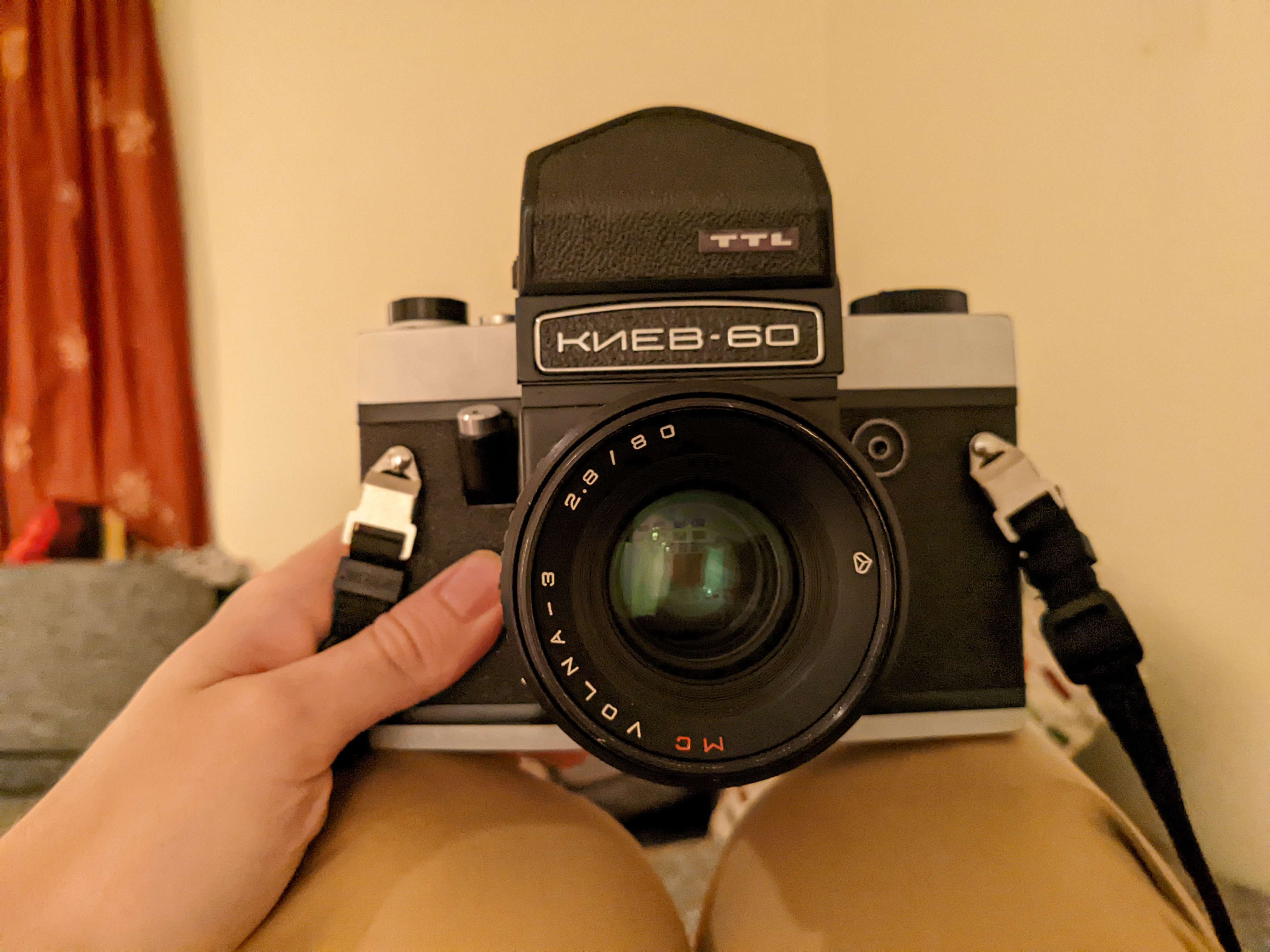
And by looking pretty, I mean, looking bulky and utilitarian, and yet, somehow to my eyes, more aesthetically pleasing than a few of its medium format brethren. Knees for scale!
Table of Contents
The Gear
The Camera
This is a Soviet Camera, manufactured starting in 1984. It shoots medium format, 120mm film in the 6x6 format, which means that each negative is a six-by-six square and that you get twelve photos per roll of film. The camera is fully manual, meaning that you are required to do your own metering and set the shutter speed and aperture to correct values.
My camera came with the original case, the original lens, and two interchangeable finders, a waist-level finder with a magnifying loupe and a pentaprism featuring TTL metering. The meter on the pentaprism is completely disconnected from the camera settings, and you need to set them a second time using dials on the finder, then push a switch and observe whether one or both LED’s light up.
Thus far, I’ve mainly shot with the waist-level finder and metered from my phone.
For an overview of how the camera works, and also how loading film works, check out this youtube vid:
The Lenses
The camera shares a breech-lock mount with the East German Pentacon Six system, and its successor the Exakta66.
Essentially, this means that lens options include other Soviet glass, or a variety of higher quality (and higher priced) Carl Zeiss Jena or Schneider-Kreuznach lenses. The Schneider-Kreuznach lenses in particular are crazy expensive and scarce and definitely out of reach for pretty much anyone sane. (Unless one comes up for a super bargain, which will likely never happen.)
For right now, the lens I am using is the one that the camera came with – a Volna 80mm f/2.8 roughly equivalent to the “nifty fifty” – which is why I’m half-ironically calling it an alternative to the Olympus 25mm f/1.2 pro lens for the Micro Four Thirds System.
Film
On my way to pick up the camera, I stopped by my local camera shop to pick up some film. It turned out that there was some sort of special event on and the place was absolutely flooded with people. I laboriously squeezed my car between a van and a concrete poll to park in their small garage and then headed upstairs with the goal of getting in, getting film, and getting out as quickly as possible. So my choices were somewhat random.
I picked up some Kodak Gold 200, a film which was reintroduced for medium format this year after being discontinued 25 years ago in 1997. It’s known for warm colors and was considered more of a “consumer-oriented” film, so it was my goal to try shooting it in sort of early morning/late evening golden hour type lighting conditions.
My second roll was a Fuji Neopan 100 Acros II, a black and white film that was introduced relatively recently as a replacement for some discontinued types.
Film is on the up and up?
Shooting Experience
There are some things about this camera that are annoying. It’s heavy. It’s bulky. (As befits a 6x6cm negative.)
But there are two main advantages to using it, just in terms of process:
Firstly, it is limiting. It is expensive to actually take pictures with it, and you only get about twelve per roll. Thus, I’ve gone on walks with it and only taken one shot. Or, taken zero. It encourages economy, and thoughtful composition. And that’s cool.
Secondly, it does actually feel nice to use this camera. I mean, the build quality isn’t perfect, but the viewfinder is so large and bright, and with the split prism, looking through the lens is magical in a way that is different from any other camera I’ve used. The waist-level finder is also just mesmerizing to look through, even though it’s left-right mirrored (a struggle for me finessing framing).
And, the third, obvious, non-process advantage is that there is some magic in the image quality.
And I am eager to try and harness it more.
First Photos
When we open, I’ve just loaded the film a bit stupidly, and have taken a few shots in Volunteer Park, most of which are on the lead and not the roll. (Re: do not use the film advance lever while loading film, you’ll throw off the film counter, dumb past Steve who needed to watch the right video to understand this.)
I took these on the Water Taxi to West Seattle, realizing as I went that I am not good at levelling horizons in the mirror of the waist-level finder.
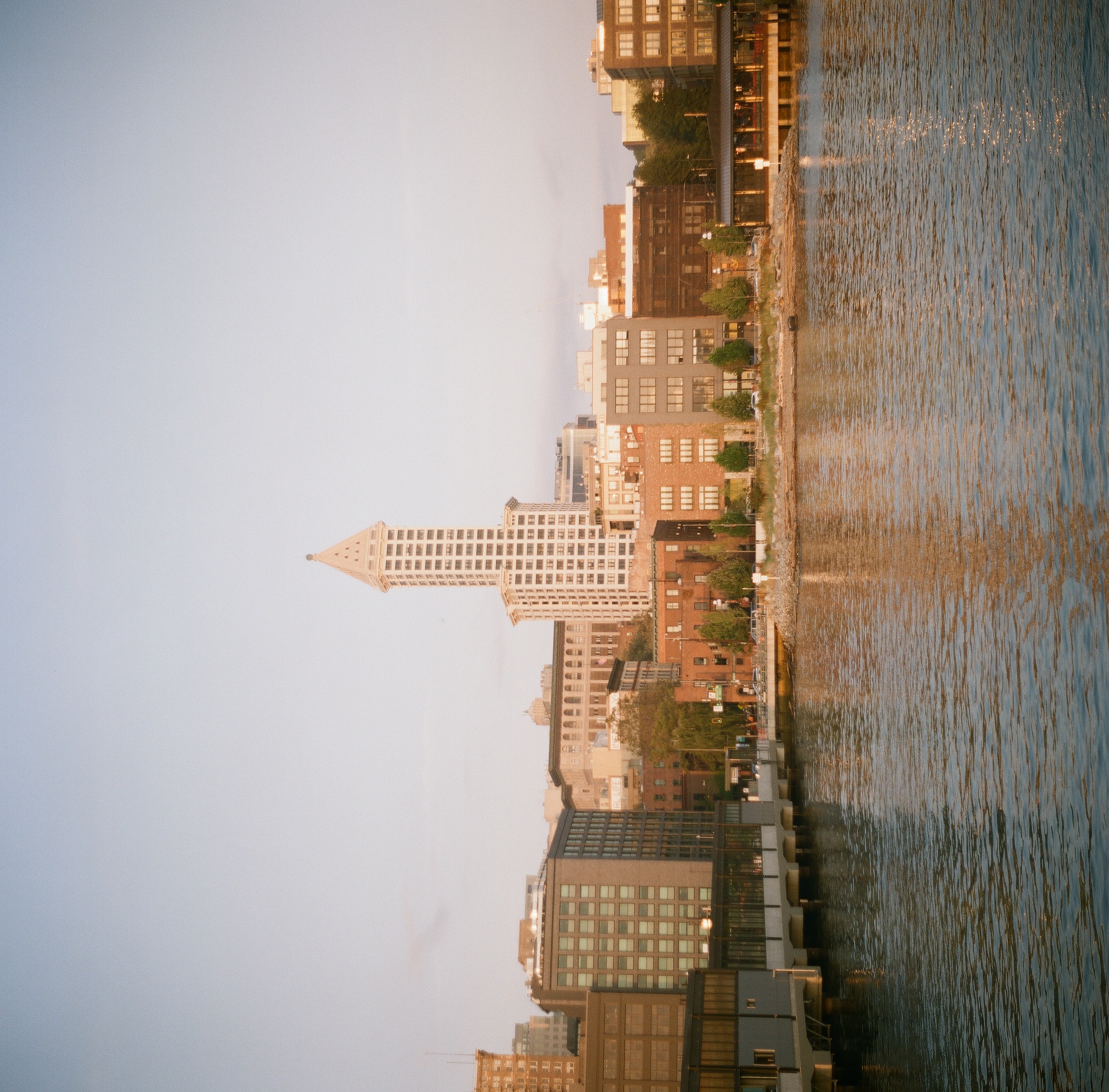
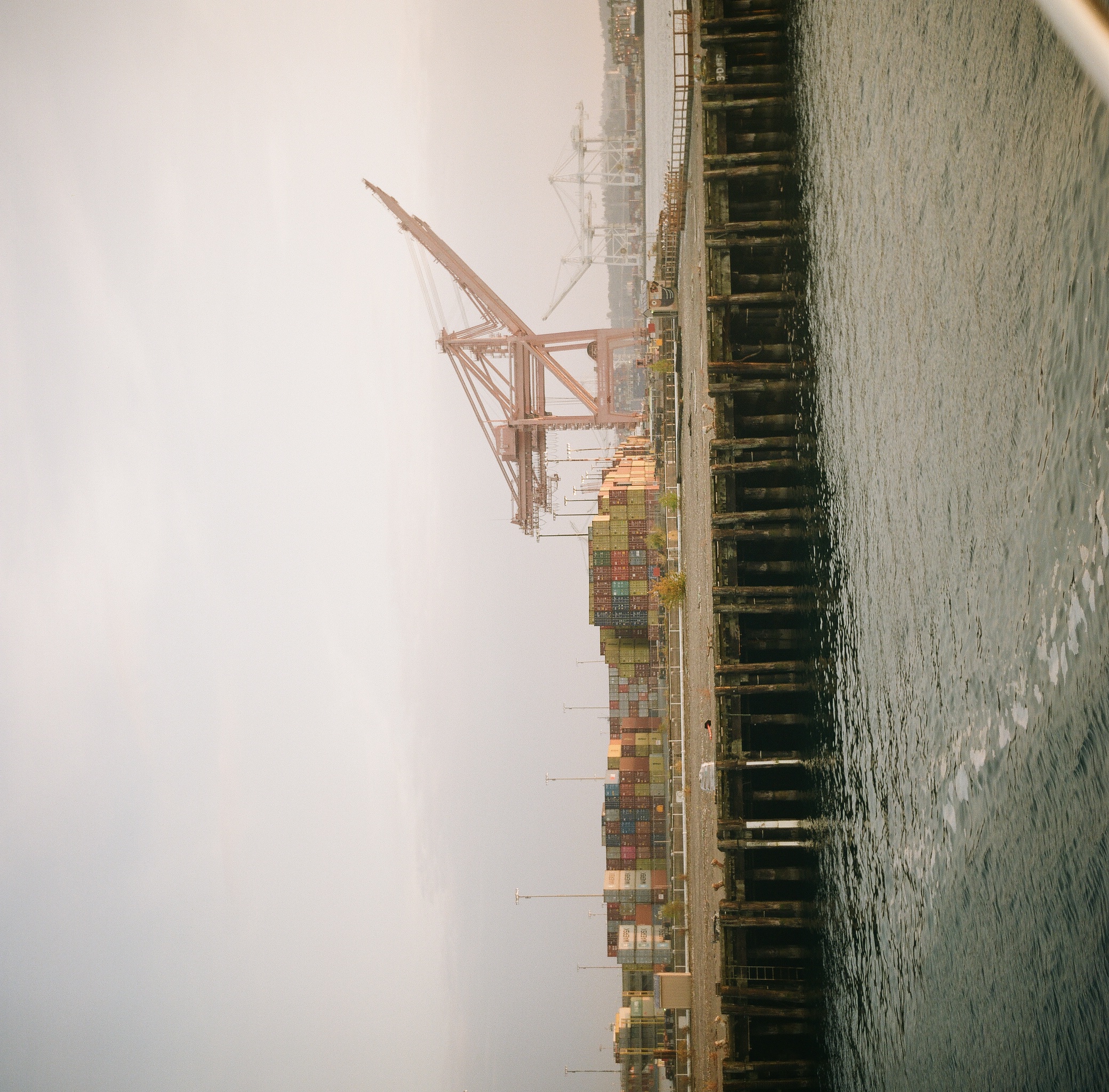
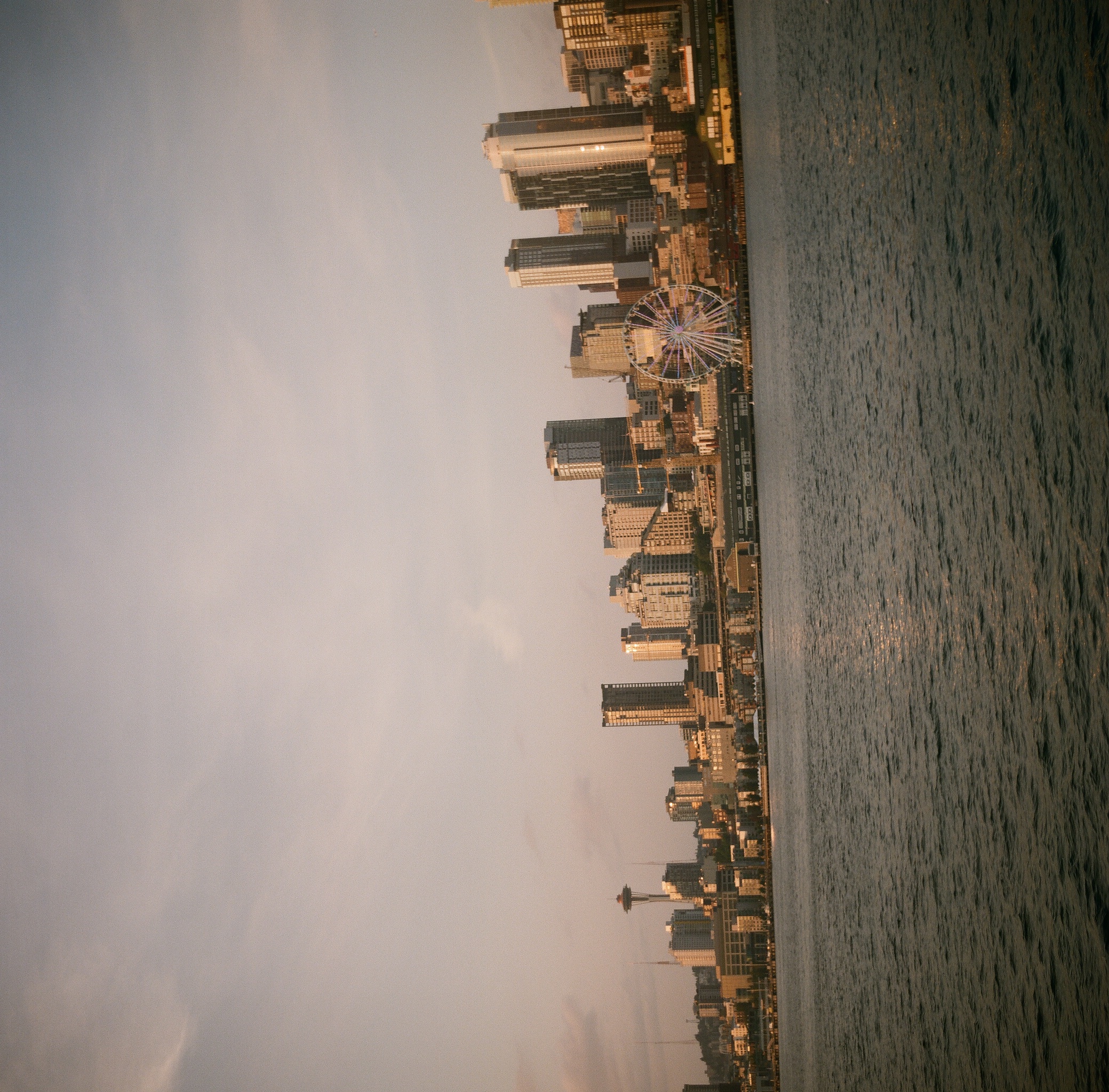
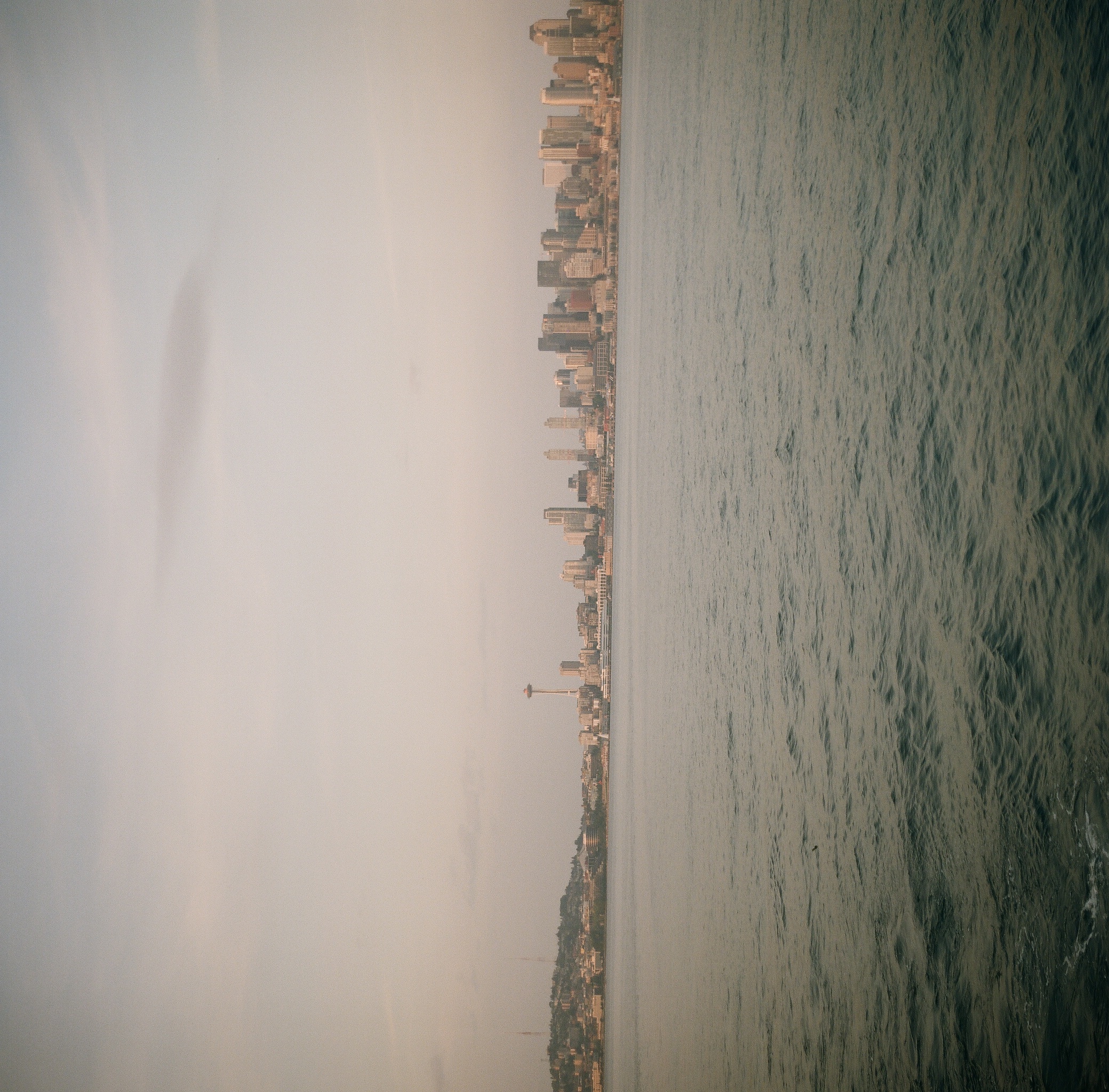
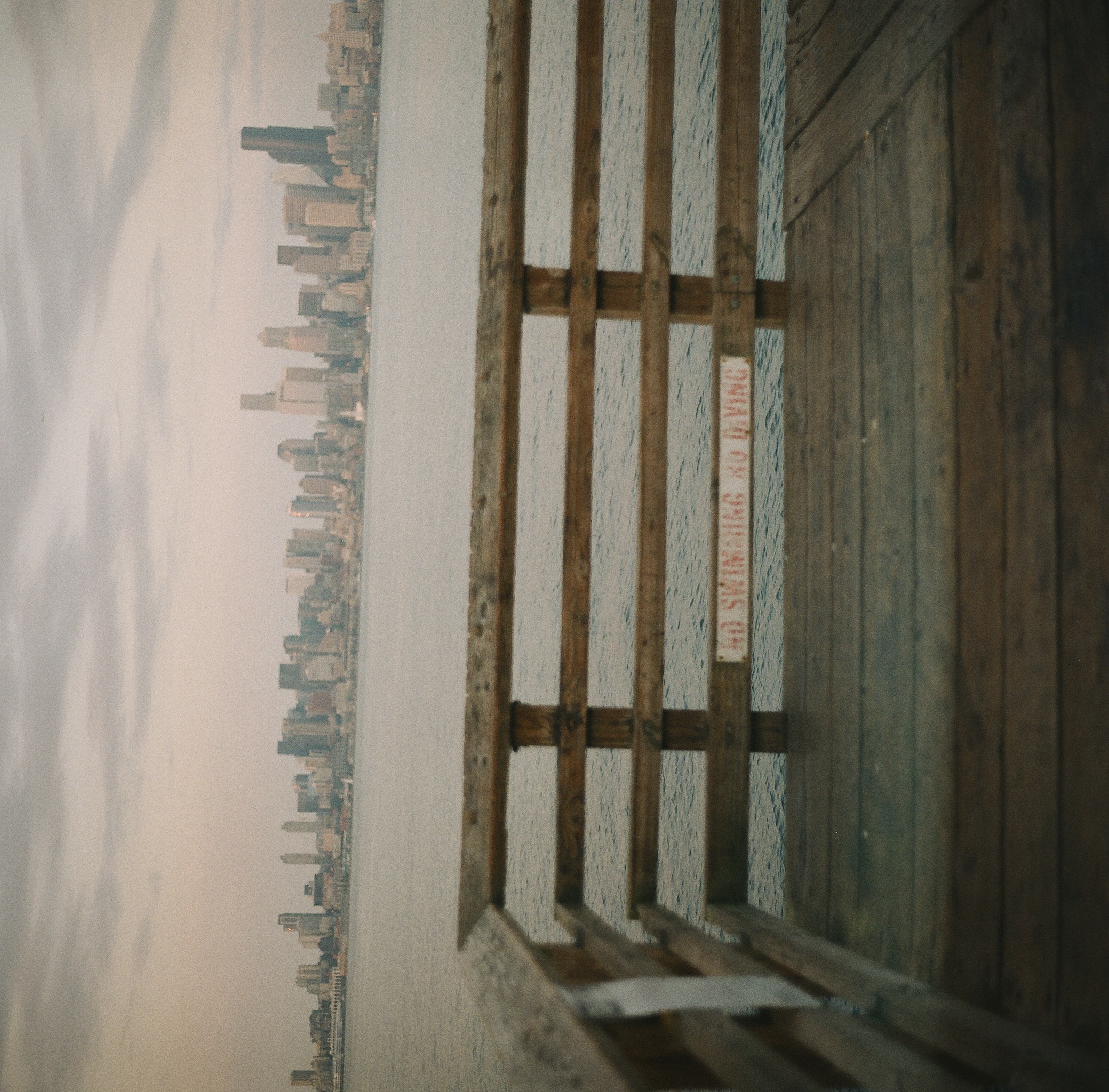
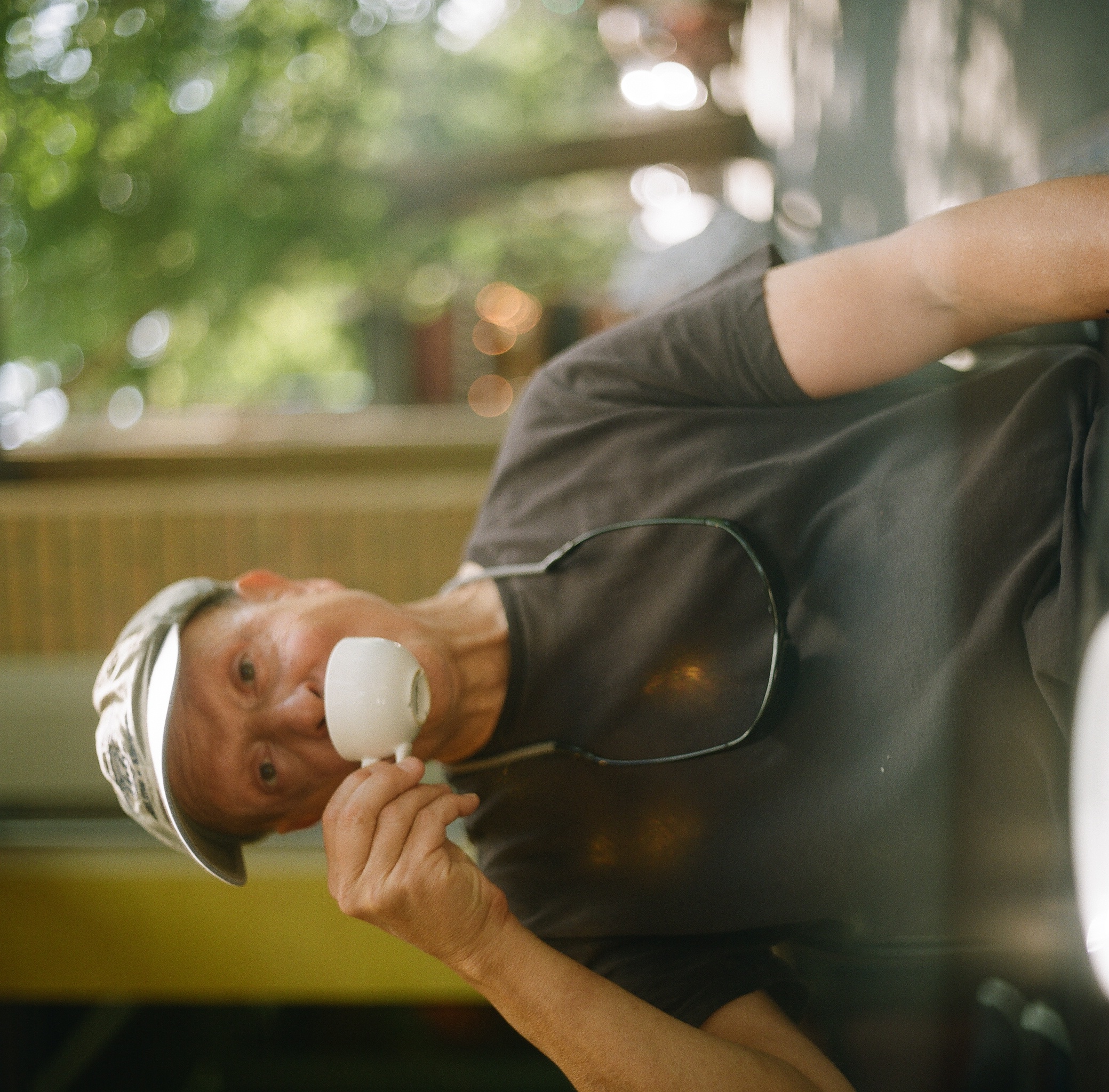
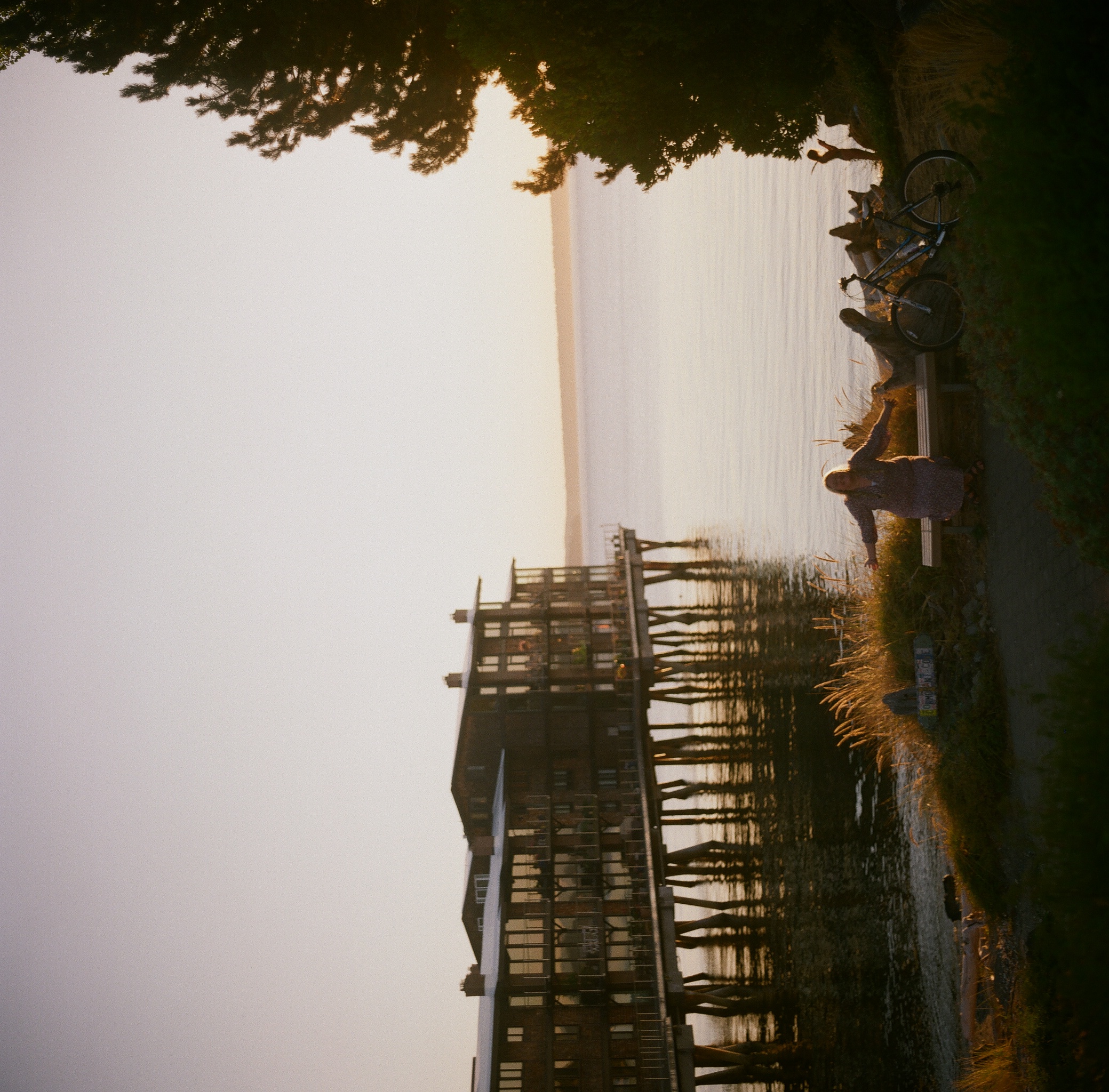
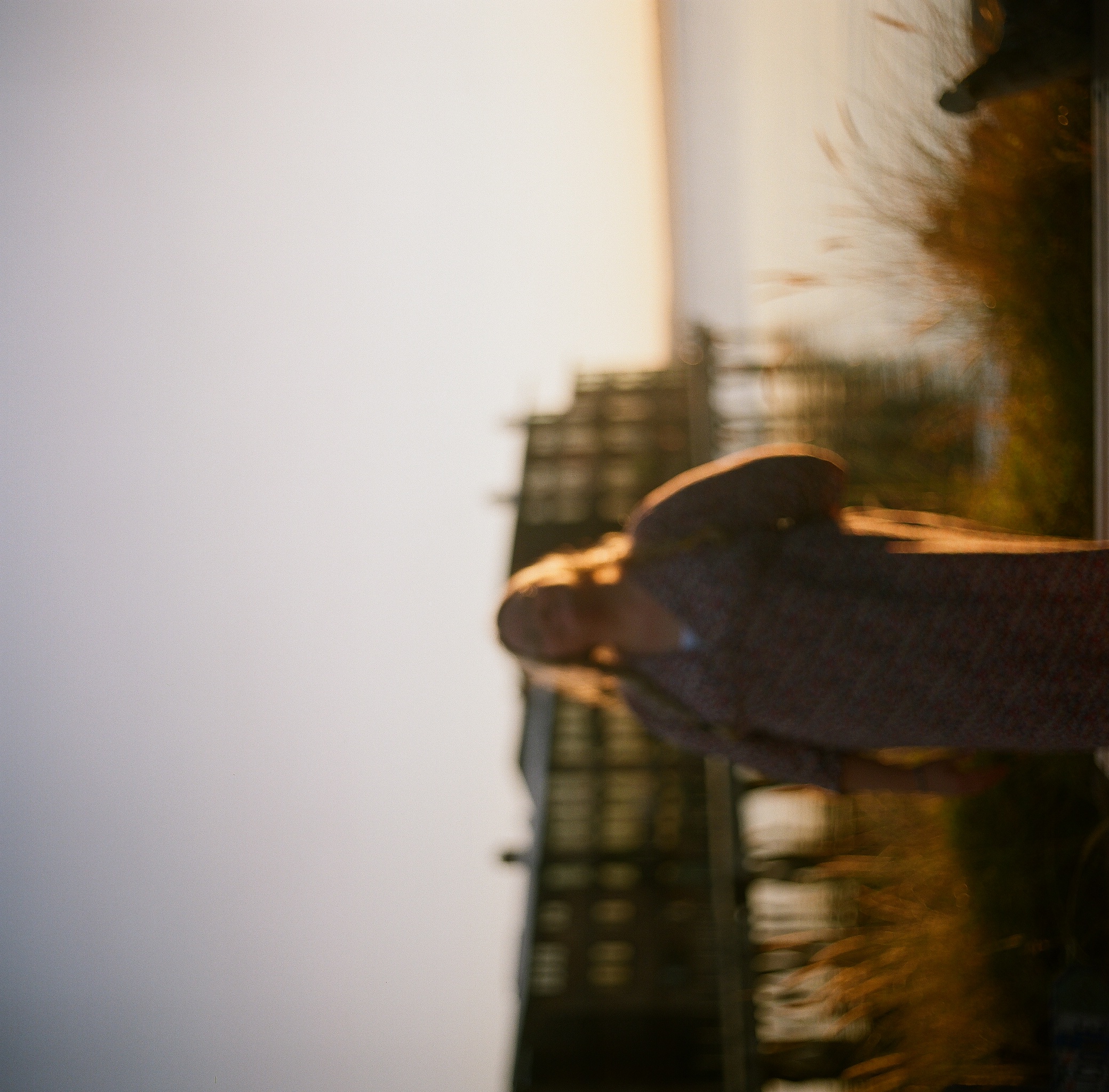
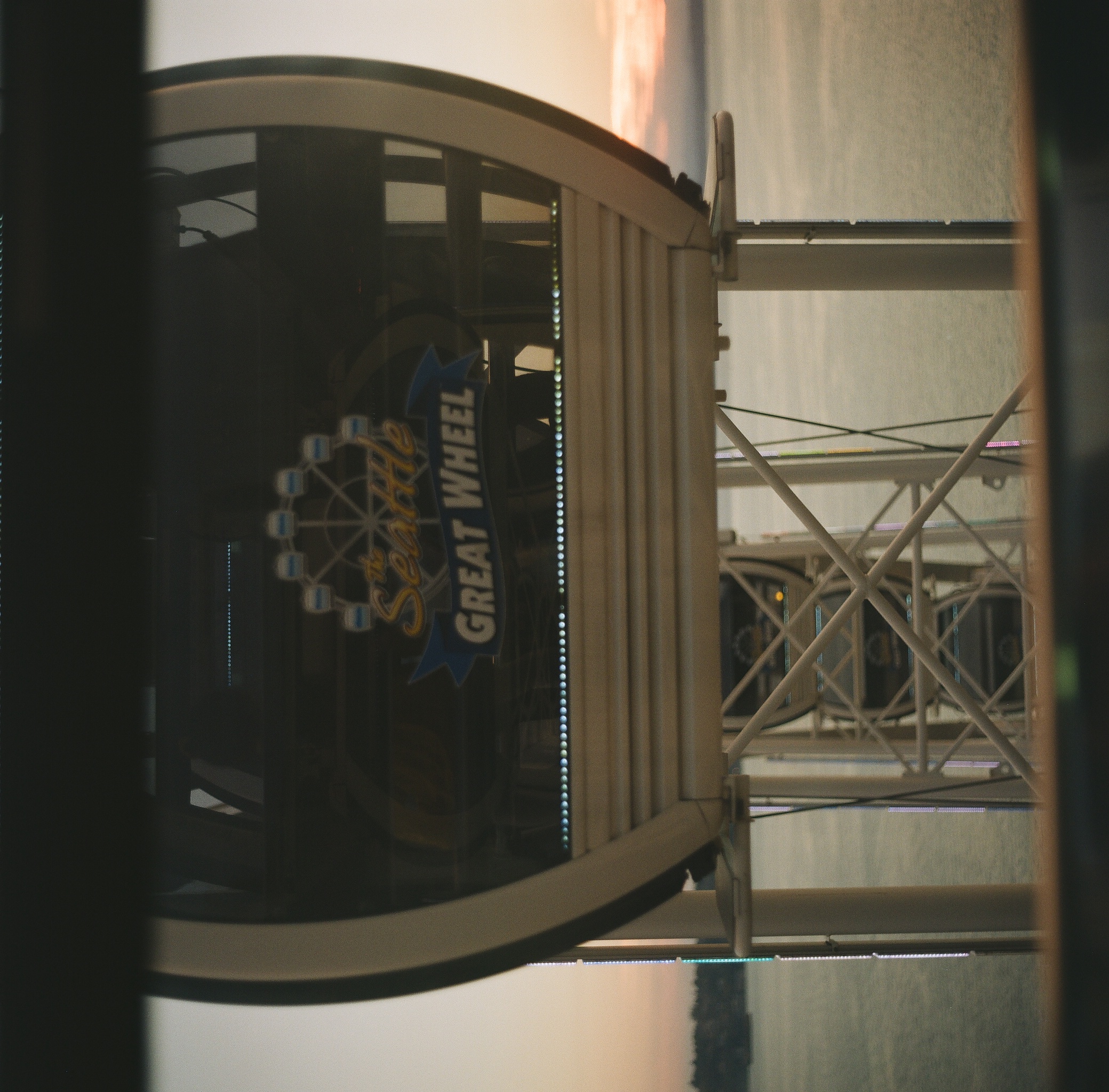
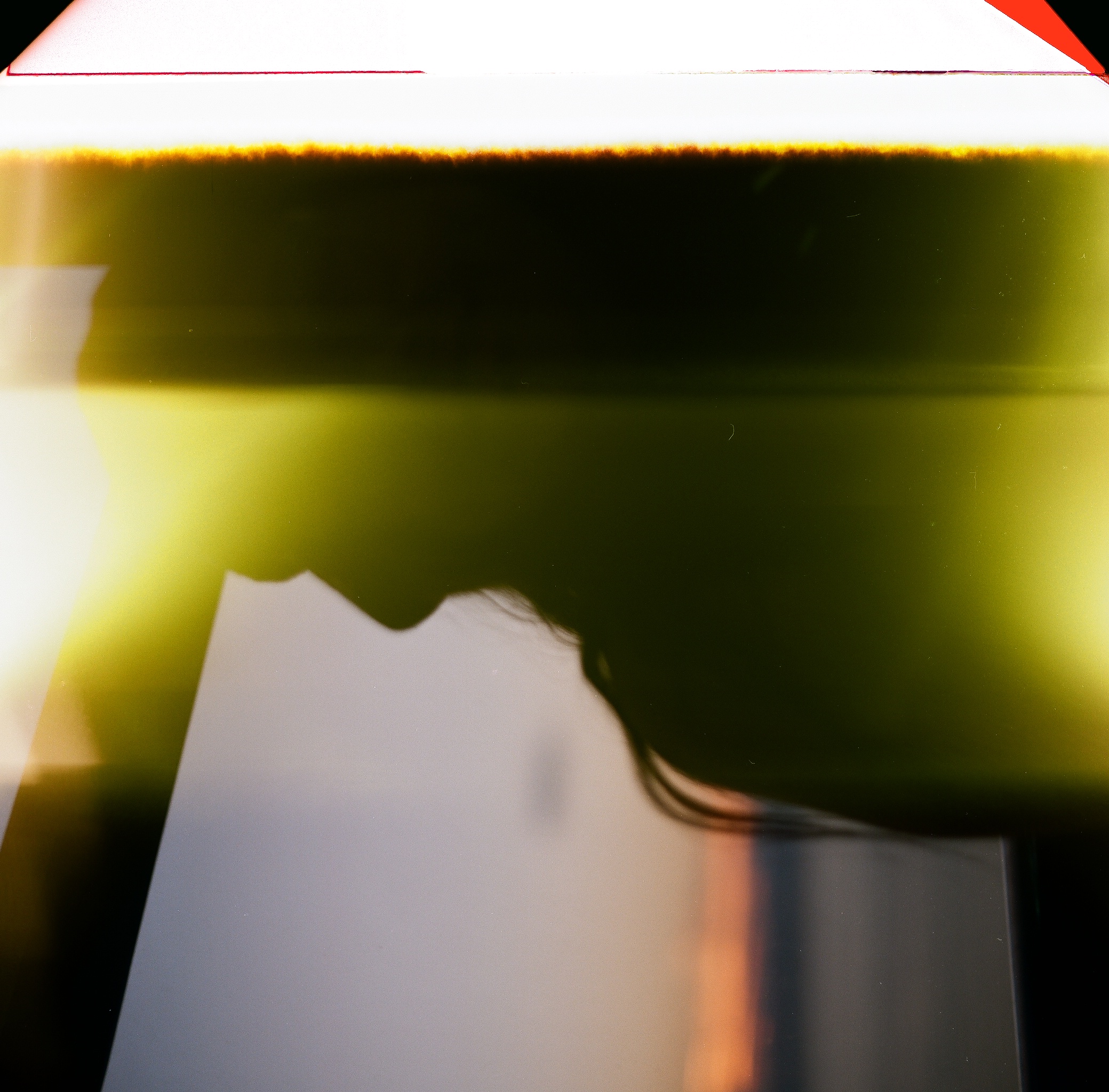
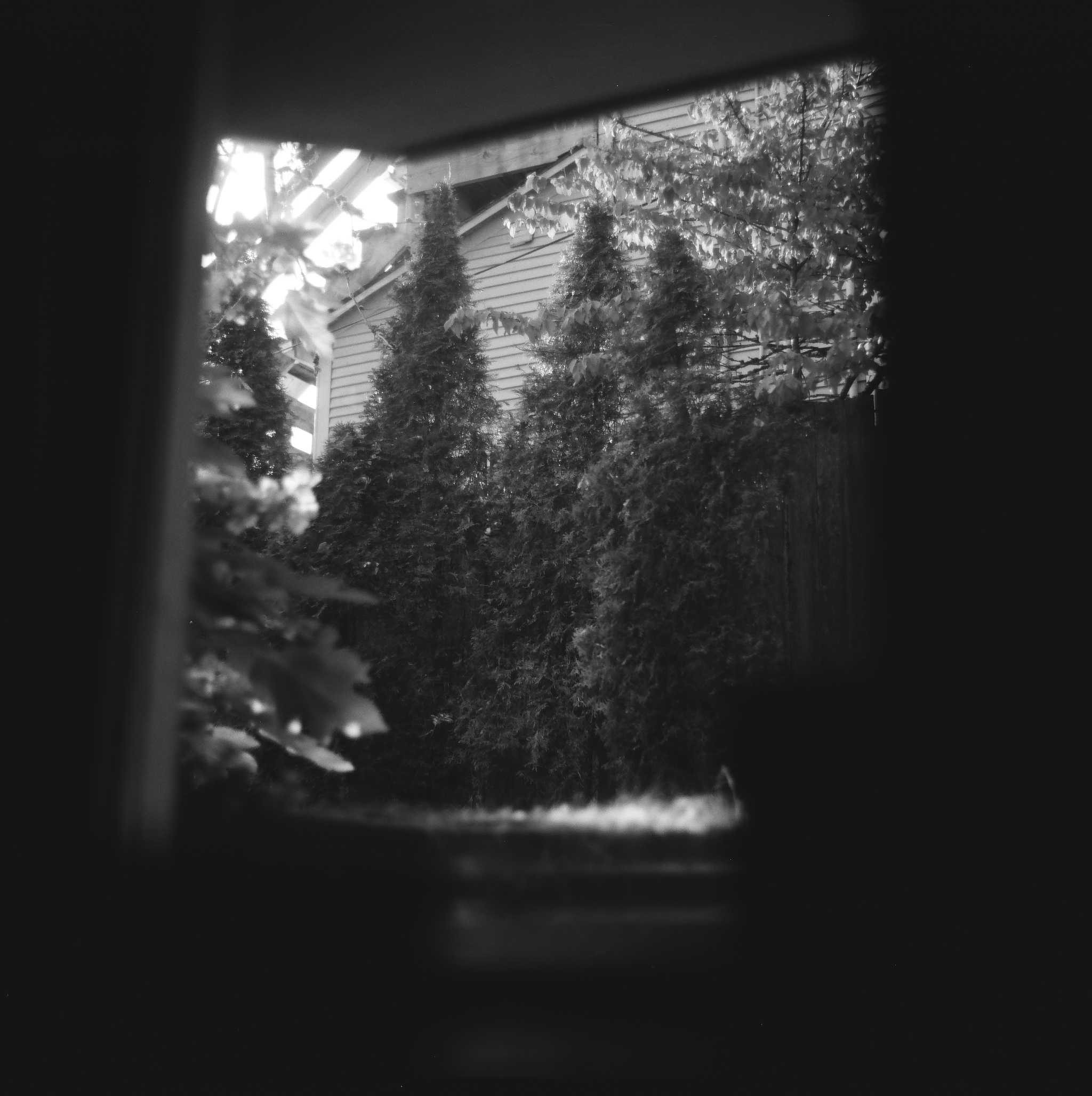
I headed to Fremont, the neighborhood that claims to be the “center of the universe.” It’s home to a Lenin statue, a rocket ship, dinosaur-shaped topiaries, a fantastic acoustic musical instrument shop (Dusty Strings), a good cider bar, and a lot of other stuff.
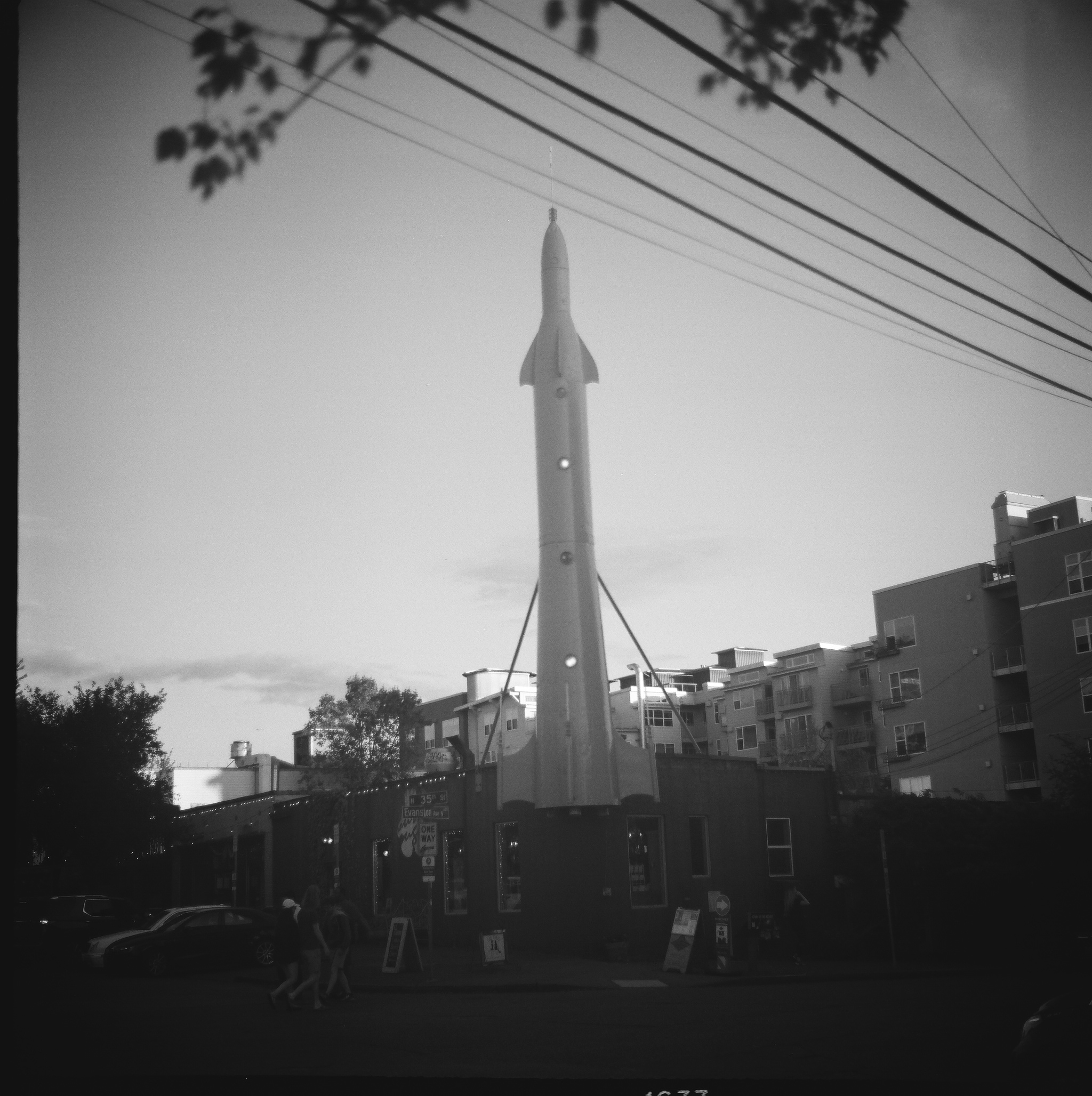
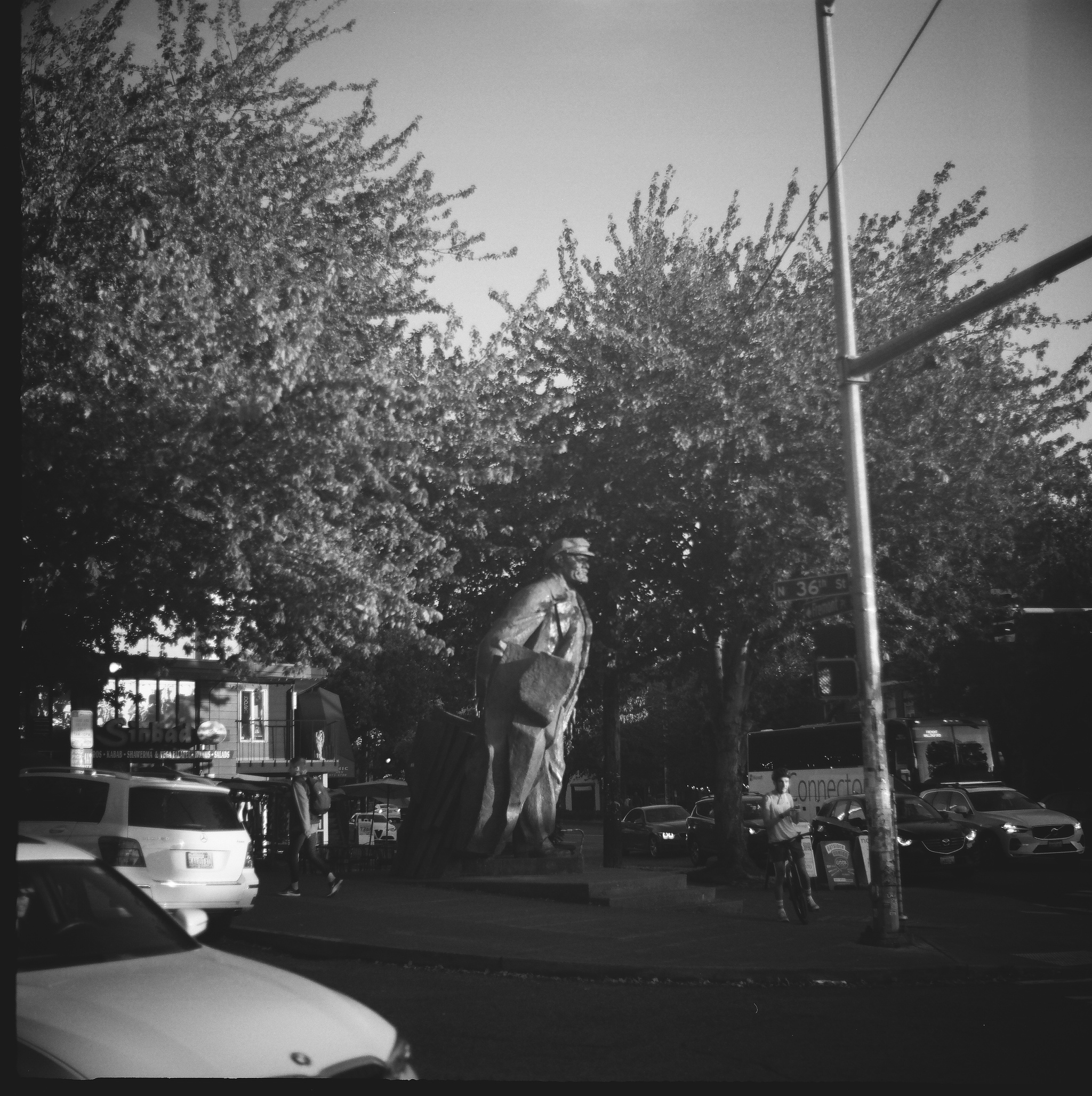
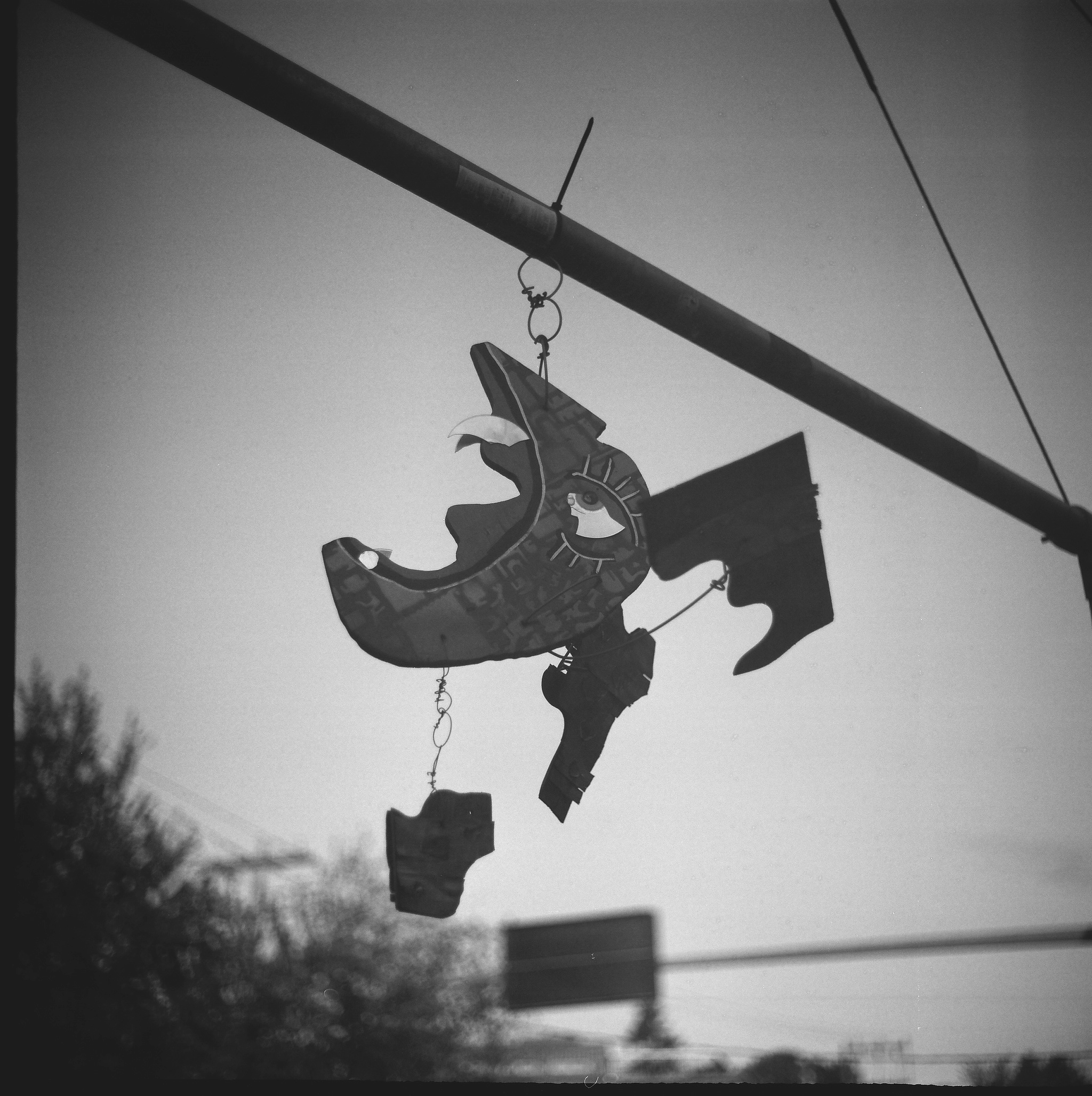
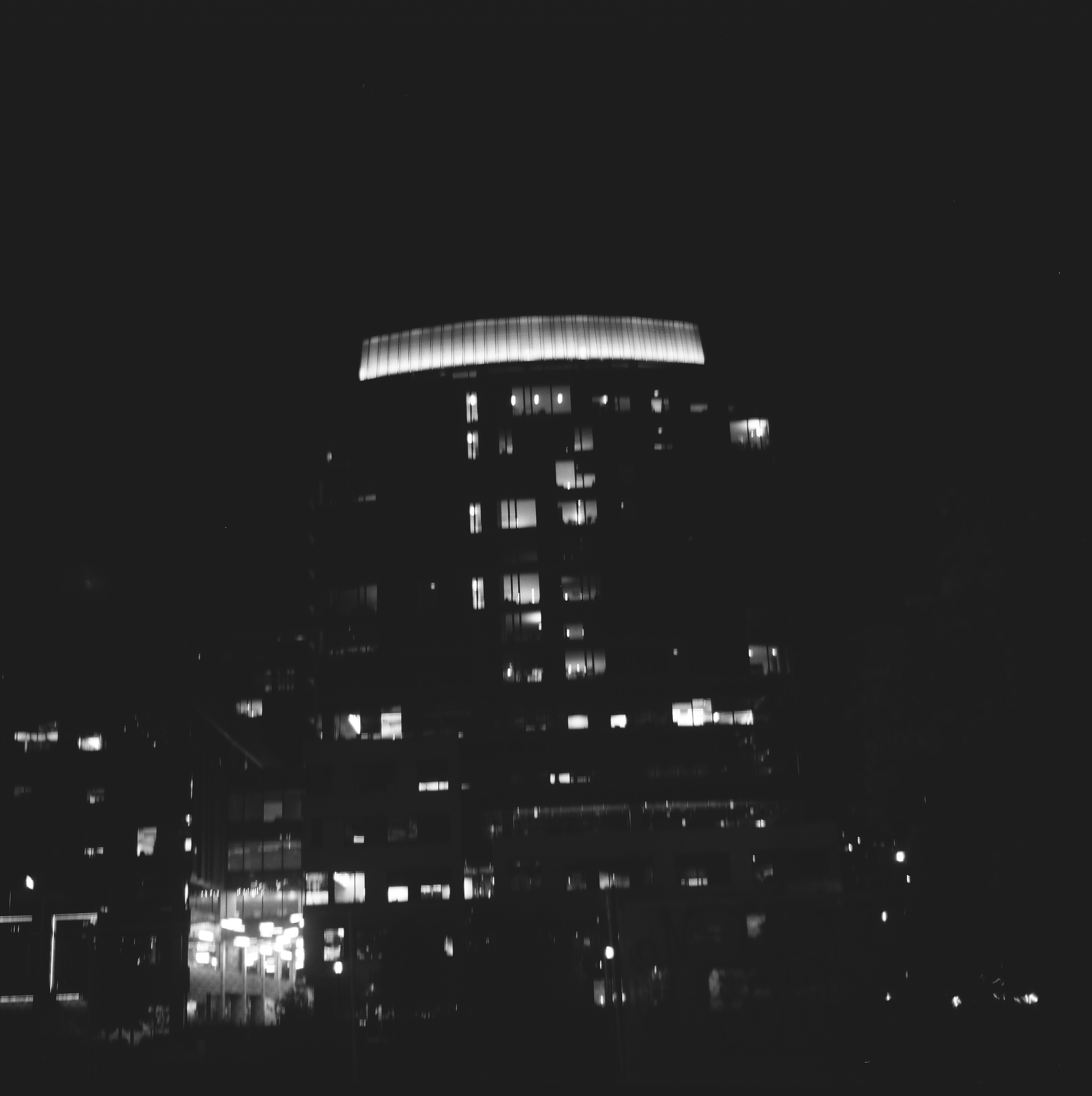
The ballard locks are also photogenic. (More on this shortly.)
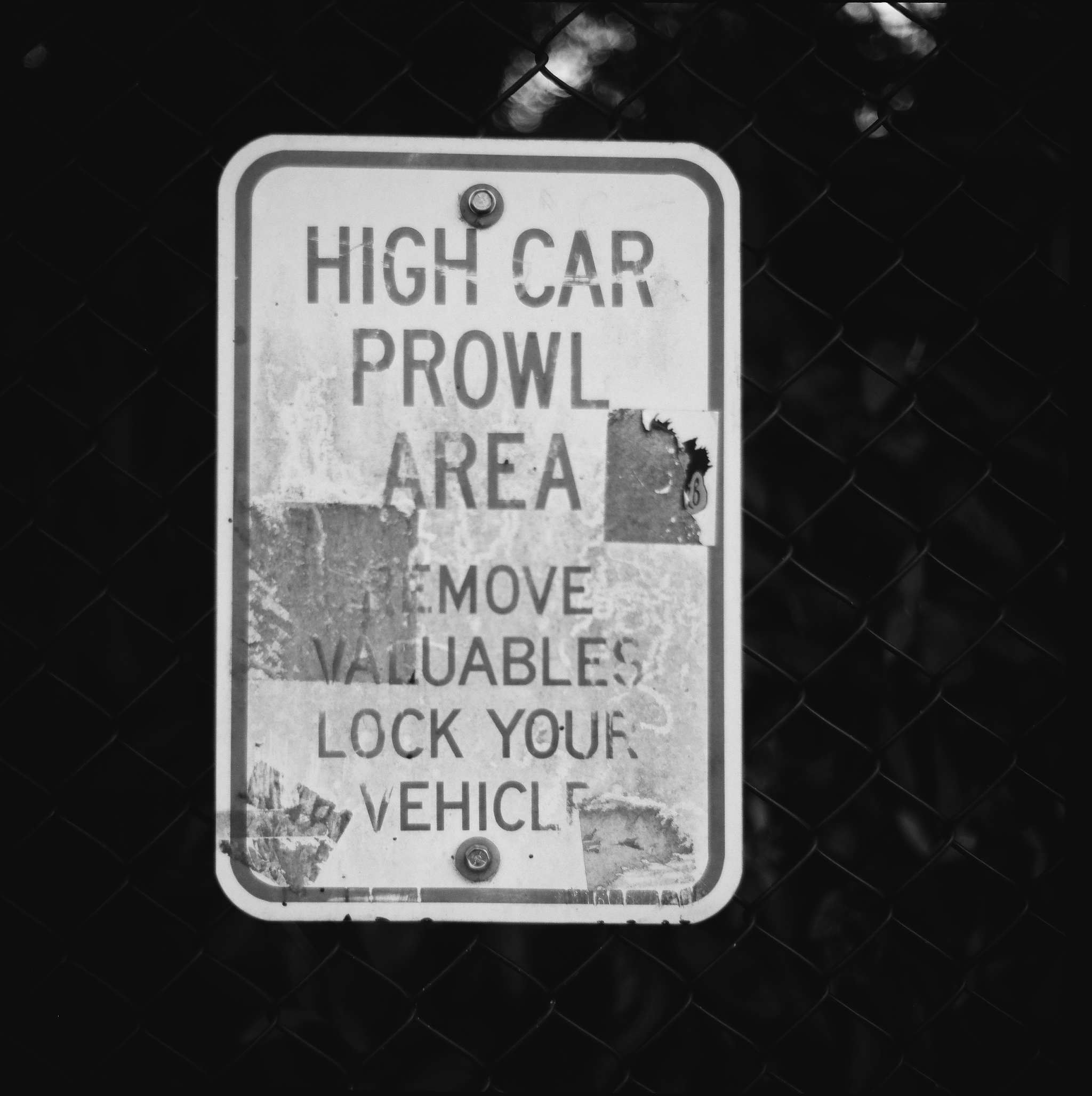
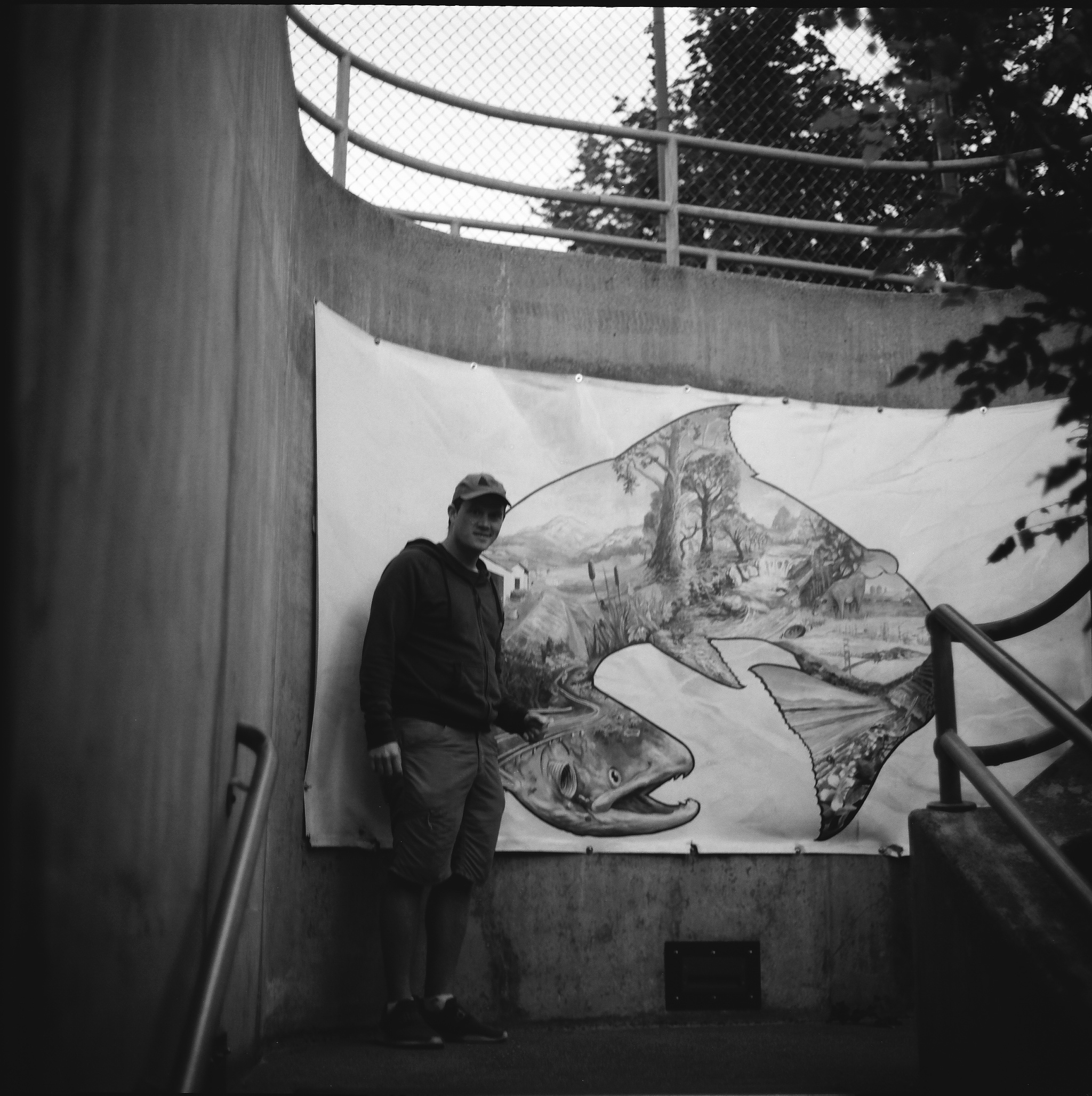
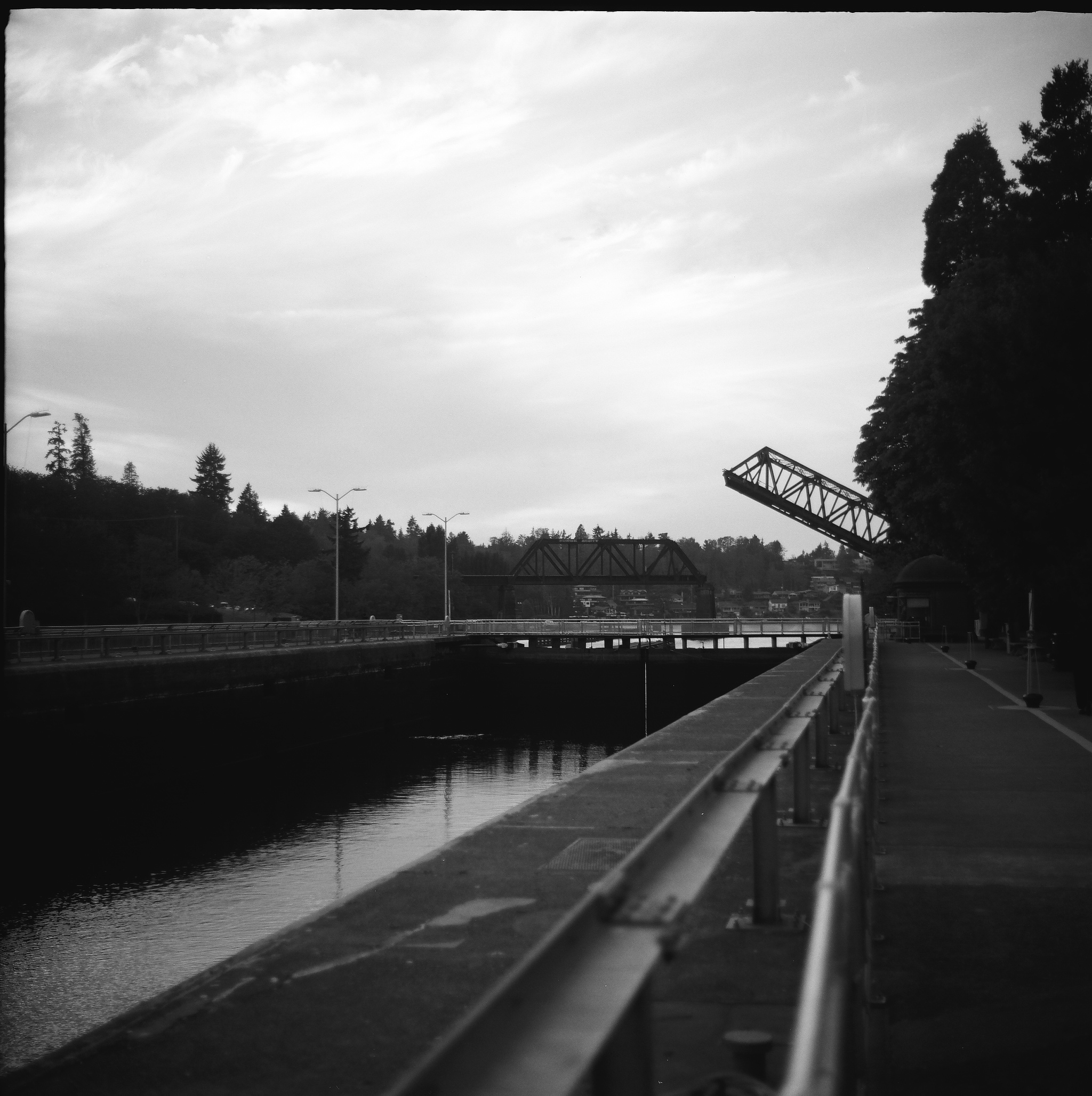
I’ve only included part of this roll here.
Because, see, I took the camera with me on my next long drive, and the places I stopped by are more interesting than writing about cameras.
Concluding Thoughts
All 120 film cameras are big and heavy. They have to be, in order to take film that is ~600mm high instead of ~35mm.
The disadvantages of the Kiev 60 are mostly inherent to the format. In order to be an SLR with that size film, it needs to be a big, heavy camera. Combine this with the fact that film is expensive, and there are a precious 12 frames per roll, and I sometimes get the feeling that the camera is a bit of an albatross around my neck. I lug it places, and I use it so seldom when I do.
But, the more seldom I lug it, the more I’m thinking about what I want to use it for. And, the more I do that, the better the results.
And, besides all those details – it is just, lovely to look through that viewfinder, focus that bright image, and press down on that shutter button. And hear that magnificent, loud SLAP of the mirror.
I just can’t imagine traveling anywhere with it, though, unless it was a road trip. Its size and weight would not go unnoticed in a knapsack, that’s for sure.
This post was part of a series:
Thanks for reading!
If you enjoyed this post, you might enjoy these 5 similar posts:
- 2022-12-23 —The Ricoh 35 ZF: A $5 Film Camera Find
- 2024-01-22 —Shooting Svema 64 at Dusk - Slowing Down in Capitol Hill & West Seattle
- 2022-11-28 —Olympus Test and Wow: A Weekend in Portland, Oregon with the Olympus 25mm f/1.2 Pro Lens
- 2022-12-26 —To Whitefish And Back Again
- 2023-10-25 —More Afloat Than Not - August 2023 in Review